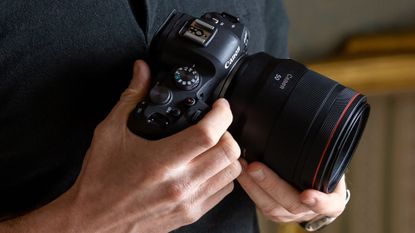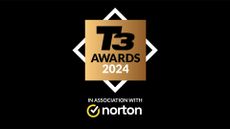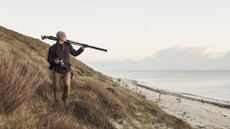The best mirrorless cameras will always have an edge over your regular smartphone snapper when it comes to quality but without being as bulky as the best DSLRs, making them easier to transport and so an excellent choice for travel.
Mirrorless cameras’ slimmed-down bodies are made possible by the removal of the mirror systems that reflect the image onto the viewfinder, using an Electronic Viewfinder (EVF) instead. For the privilege, you’ll be looking at spending a minimum of about $600 in the US, £500 in the UK or about AU$900 in Australia although prices go up into the thousands for some of the very best in the business.
Leading the way are brands like Canon, Nikon, Fujifilm and Panasonic, something worth considering given the fact that most lenses and other accessories will only work with a camera from the same manufacturer.
Here we've listed all of the top mirrorless cameras for all kinds of uses and budgets, but if you are looking for something smaller and even more beginner-friendly then take a look at the best compact cameras instead.
Which is the best mirrorless camera in 2024? The top 3
Why you can trust T3
The best mirrorless camera for most people is the Canon EOS R6 Mark II. Whether you're an amateur or an enthusiast, the Canon EOS R6 Mark II delivers top-notch performance in a small, portable body.
The best premium mirrorless camera is the Panasonic Lumix S5 II. While it doesn't come cheap you'll get natural tones, impressive dynamic range, exceptional image stabilisation and competitive autofocus capabilities.
The best budget mirrorless camera is the Nikon Z30. Suited to budding photographers, the Nikon Z30 is easy to use, compact and a leading performer without the premium price tag.


The Canon EOS R6 Mark II hits the sweet spot between practicality and price. While it may not be as advanced as the manufacturer’s most expensive flagship mirrorless system, it does still offer a lot of the same specifications and features making it a great choice for hobbyist photographers.
When T3 reviewed the Canon EOS R6 Mark II, we were overall impressed by the stunning full-frame imagery we achieved and were struck by the accuracy of the colours as well as the level of detail in the shots we took. As you might expect, the outcome was even more impressive after a few tweaks to the contrast and an application of levels.
Shooting was equally as smooth sailing, partly thanks to the flip-out LCD screen which meant we didn’t need to be pressed up against the viewfinder for low-angle shots. Importantly, the camera comes with two SD card slots although you won’t get CFexpress support here, and at the time of writing, there are 30+ directly compatible RF mount lenses to choose from.
It’s no wonder this mirrorless camera picked up a whopping 5 stars, to find out more you can read the full Canon EOS R6 Mark II review.

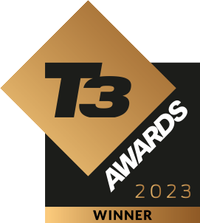
Whether you’re a beginner or a photography enthusiast, the Panasonic Lumix S5 II is a first-rate mirrorless camera. It’s simple to get your head around but still manages to pack in an advanced array of features that will deliver professional-quality images.
Allowing it to compete with the most popular cameras in the industry, the Panasonic Lumix S5 II is loaded with a new faster and more comprehensive 779-point Hybrid Phase Detect Autofocus system than its predecessor. When we gave it a test run we found that ‘whether shooting at its maximum mechanical shutter burst rate of 9fps or its blisteringly fast 30fps burst mode in e-shutter, you’re going to nail a significantly higher rate of keepers using the S5 Mk2.’
For content creation, this camera is also super versatile, as we noted in the review it’s ‘easy to capture content for multiple outputs as it comfortably gives you a crisp Full HD vertical frame that you can crop into without quality loss, as well as a 4K 16:9 horizontal frame.’
Happy to splash out on a 5-star snapper? Check out the Panasonic Lumix S5 II review for more of our takes.
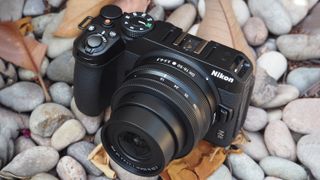

Nikon has online influencers, vloggers and content creators of all descriptions in its sights when it comes to the Z30, selling its smallest mirrorless camera to date as ‘video first’. That gives you the option of up to 35 minutes of 4K video in a single sequence, or 125 minutes of Full HD video. Omitting both an eye-level viewfinder and built-in flash, its swift operation centres around the tilt and swivel LCD screen at the back, and of course the 20.9MP APS-C sensor inside.
Despite the slimmed-down design, there's still a reassuringly chunky handgrip that makes for steady one-handed recording. The imagery provides plenty of contrast and detail as well, while the built-in stereo microphone delivers crystal-clear audio. Add the ability to plug in an external mic for even better sound and a hot shoe for various accessories, this camera has the potential to be expanded into an even more practical piece of kit.
If you’re looking to keep the price low and this option looks like a good fit, we’d recommend reading the full Nikon Z30 review.
Best mirrorless cameras 2024: best of the rest
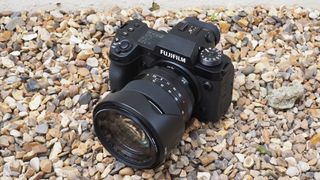

If you can get by without a full-frame sensor then the Fujifilm X-H2 still produces impressive results using a smaller APS-C 40MP sensor. Because it's a more weighty piece of kit, it will be a great choice for someone moving from a DSLR, partly thanks to the physical buttons and dials you get as well as its levers and switches – including forward and rear command dials.
Performance is another huge plus point here, requiring little manual work, as you can read in the review: ‘this being a Fuji camera the results are pleasingly natural in terms of colours, meaning that what we see is essentially what we get in terms of results. We rarely felt the need to tweak or boost the saturation, or alter the contrast straight out of the camera, so the Fuji proves a time-saver when it comes to workflow.’
It sounds like a pretty good package, but if you need to know more before you buy then read the Fujifilm X-H2 review.


Sony has taken things up a notch with IV iteration of the A7 range which means you now get loads more powerful specifications like a high-resolution sensor, excellent handling, good video specs, superb autofocus and a solid burst shooting capability.
To cut to the chase, that will allow you to shoot a bit of everything because this is a camera that can take it all in its stride. Other improvements include a vari-angle screen (compared to the predecessor’s tilting-only variety) and dual SD card slots which can even accommodate the super-fast CFExpress cards. Of course, there’s a price to pay for all of that, and the A7 IV is no longer the bargain it once was. But, presumably, for that reason, Sony has kept the Mark III in the range, so you could always opt for that instead.
Read more about what got this camera its 5-star rating in the full Sony A7 IV review.
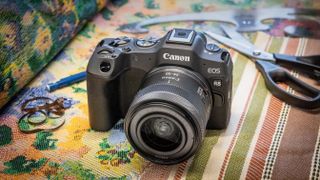

As lightweight as a compact camera and about as user-friendly as mirrorless cameras get, the Canon EOS R8 is undoubtedly one of the best options for beginners. Also very convincing is the price tag which won’t make your eyes water in the same way as some of the cameras towards the top of this list.
You’ll not only find the interface easy to navigate but the button layout also feels very intuitive, something that will also lend itself well to amateurs, while extra features like subject detecting and tracking will help things along too. None of that means compromising on image quality, though, we described the results as ‘both naturalistic and detailed, with sufficient creative scope in tandem with our lens to achieve defocused backgrounds and sharp subjects that really pop on screen.’
The Canon EOS R8 review explains more about what you can expect if you choose to buy this mirrorless camera.
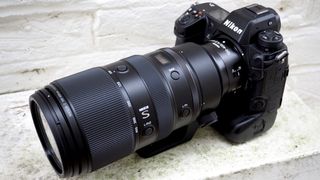

Willing to splash out big time on a camera that can do everything from landscapes to action shots? The Nikon Z9 is one of the best mirrorless cameras for professionals because it can quite literally handle any type of photography. Chunky as it may be, it’s still smaller than Nikon’s top-of-the-range DSLR which in itself is a big draw to this device.
As described in the review, the 45.7MP resolution images display ‘plenty of detail and will withstand being enlarged to a billboard or wall size when printed’. Even RAW files can be captured at up to 20fps, in a burst of up to 1,000 images at a time. Add in the ability to record up to 8K resolution video between 24fps and 60fps, or 4K video between 24fps and 120fps, along with time-lapse videos, and it’s clear that this camera is a proper powerhouse that can entice content creators as well as photographers.
Does this professional-level camera sound up your alley? Read all about what else it has to offer in the Nikon Z9 review.


The Fujifilm X-T5 is a compact mirrorless camera system that pairs Fuji’s distinct retro styling with a huge 40.2MP resolution, which you don’t often find in a body this small. Naturally, it is heftier in the hand once you’ve attached a lens. Analogue-style dials and solid construction make you feel as though this is an investment to last. You’ll also find an eye-level viewfinder so you can shoot in an old-school way as well as using the LCD screen.
For most the massive resolution might seem like overkill but it certainly future-proofs the device and ensures impressive detail. As for the image quality, Fujifilm has opted for a more naturalistic approach, which is refreshing in comparison to the often oversaturated shots produced by many of its competitors, although if you prefer that look then it’s easy to add more punch.
If it’s an all-rounder you’re looking for then this certainly delivers, take a look at the Fujifilm X-T5 review to find out more about it.


Not everyone needs a full-frame mirrorless camera with all the trimmings, and if you’re happy with APS-C then the Nikon Z FC is one of the leaders of the pack.
Thanks to its small, lightweight build, it’s the perfect choice for travel, but that’s not to say that it skimps on specs. Quite the contrary in fact with extras like 4K video, a high frame rate and an excellent screen and viewfinder combination.
While it doesn’t come cheap, it’s actually quite reasonably priced given everything you get, and even more so now that it’s a couple of years old. It was also once true that the number of Z-mount lenses you had access to were fairly limited but more and more are being released now making that less of a problem today.
Find out about how T3 got on during testing in the Nikon Z FC review.
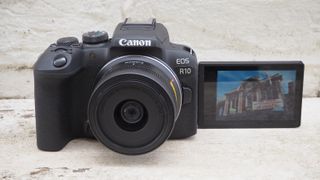

If you’re just starting out, spending thousands on a mirrorless camera might seem pretty excessive, in which case something like the Canon EOS R10 will be better suited to you. As you might expect, you will have to make some sacrifices in comparison to pricier models like the R7, for example, the resolution has dropped to 24.2MP, there’s no body integral image stabilisation and you’ll only get one SD card slot.
In saying that, you do get some more beginner-friendly features like a smaller body and a pop-up flash. And we were still impressed with the overall image quality when we tried it out which had plenty of detail and rich colours overall, especially in bright daylight. As we pointed out in the review, you’re unlikely to notice the lower resolution unless you were to blow up your images bigger than your desktop screen, which again makes it well-suited to hobbyists and other amateurs.
The Canon EOS R10 review provides a more in-depth look at this affordable mirrorless camera.
How to choose the best mirrorless camera for you
Mirrorless cameras have really taken off in the last few years, which means there are tonnes of choices out there right now.
Most people will largely be influenced by their budget but the types of photos or videos you take will have an impact too. If you're not planning on taking professional photos for billboards or fast-paced action shots then you won't need to spend thousands upon thousands on a camera with huge resolution or a high capture rate.
As well as that, you'll need a device to match your skill set, some are more intuitive to use than others, although the more features you get packed in, the more future-proofed the camera for when your ability grows.
In this buying guide, you'll find a selection of the best mirrorless cameras for beginners, hobbyists or full-time enthusiasts. If you already own a few lenses then often manufacturers will have a few options for every type of photographer too.
What is a mirrorless camera?
Traditional DSLR (Digital Single Lens Reflex) cameras require a mirror to reflect the light (which comes through the lens) up to the optical viewfinder. As the name suggests, a mirrorless camera is one that doesn’t require a mirror.
In a mirrorless camera you don't have an optical viewfinder. The lens projects the image directly onto the sensor, and you'll see the digital image on the display or on the electronic viewfinder.
Mirrorless cameras, sometimes known as compact system cameras, were historically seen as an alternative to DSLRs.
The absence of a mirror means they're often smaller and lighter than their more traditional predecessors – and while it used to be that the trade off for that size reduction was a loss in image quality, that really isn’t the case any more.
